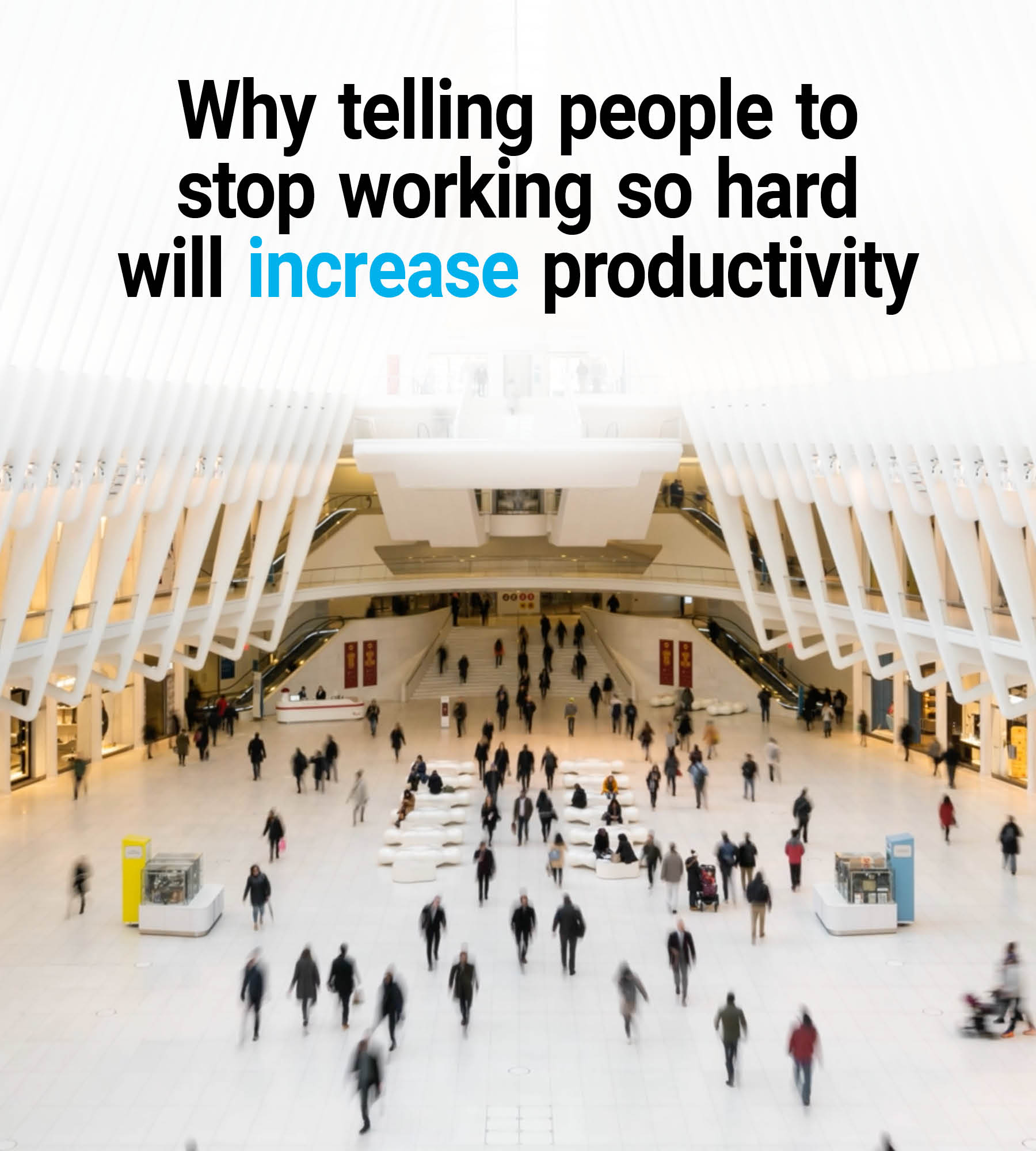Language
You can read the magazine in one of the following languages
You only have to walk the halls and listen to the conversations being had in most organizations to know that we operate in a world that wears ‘busy’ as a badge of honor.
The conversation often goes like this:
“Hey, Jo. How are you?”
“Sooo busy. It’s crazy right now, isn’t it?”
“Oh, I know, me too. I’ve been working every night this week and on weekends. It’s just hectic.”
When we hear conversations like this, the assumption might be that the organization is operating at optimal levels, with employees busily delivering on tasks. Yet we are seeing data come through like that from the ‘Gallup 2024 State of the Global Workplace Report’, which estimates that US$8.9 trillion is being lost annually due to disengagement.
Here’s my take on why: We’re so busy being busy, that we’ve forgotten what it’s all for.
I believe we need to become more intentional about challenging the busyness norm, so that we can increase productivity and profitability for our organizations. Sound counterintuitive? Hear me out.
Working with thousands of individuals and organizations over the past 16 years in various HR-related capacities has given me a front-row seat to what happens in various phases of organizational growth and change.

Now employees are working even harder, but with no greater outcome or impact. People are hustling, but not happy.
It has allowed me to see organizations in the startup stage, where the founder can stand in the kitchen and connect every person in that business to the vision and purpose, or the latest news or change, being sure their message will be heard firsthand.
I’ve also seen bigger organizations, with people spread across the globe, across different time zones and working across multiple communications channels, where a message is translated through multiple layers and still rarely gets to everyone.
Irrespective of stage or size, industry, product or service, one thing has remained consistent.
Employees get frustrated when they feel that their hard work and efforts aren’t translating to any kind of meaningful outcome or that they cannot see – or aren’t aware of – what their contribution is in support of. What often happens then, in the relentless pursuit of greater output and outcomes, is that more of the same aimless and untargeted busyness cycle continues as a solution to the problem.
Teams panic, so they push a little harder, work a little longer, squeeze even more work-in-progress meetings into their diaries to ensure they feel adequately across everything, repeat the same conversations over and over again, and yet, often all that happens is the problem further exacerbates.
Now employees are working even harder, but with no greater outcome or impact. People are hustling, but not happy.

It is at this point employees start to lose hope. They lose engagement. They tune out. They quietly (or loudly) quit.
Outside of the very real and obvious benefits of improved health and wellbeing by getting employees to stop working so hard, there are also a range of other benefits to the organization when we can get our teams to stop, zoom out and just take a breath. Genuine factors that result in organizations having employees who are more efficient and effective by virtue of:
Sounds great, right? But how do we get there? Through embedding this formula and way of working into your culture and your team – targeted effort with meaningful contribution of expertise and enthusiasm.

When employees are able to channel their efforts (energy, healthy performance pressure and inputs), contribute their expertise (knowledge, skills and talents) in a way that feels meaningful, enthusiasm and engagement improve.
Here are three places to start for an organization of any size.
1. Encourage greater connection and communication about the purpose of the organization, and ensure that employees understand their unique positional purpose – human to human. This is not about giving them a job description document. This is about a conversation with your teams to inspire them toward a central goal.
Teams feel more connected when they understand what they are a part of, yet the number of employees I still speak to who don’t understand how their role plays into their organization’s success would indicate there is a gap here.
For example, a property manager isn’t just an administrative support, they are putting roofs over people’s heads; they are providing shelter. Help them see that.
2. Language fuels culture – if the standard practice in your organization is for people to walk around saying, “I’m so busy”, it fuels others to feel the need to do so too, consciously or unconsciously.
Language fuels culture and if the unspoken rule in your organization is to succeed and get ahead by saying how busy you are and to look busy (irrespective of whether you are), then telling people to slow down will not feel like a truly safe thing to do. Get into the habit of asking regularly, “What are we busy with? Are we busy with the right things? Are these the most impactful?”
3. Encourage more conversations about strengths, skills and talents, and empower employees to talk freely about how they can use them more in their day-to-day work deliberately to achieve outcomes and increase impact.
For leaders, provide regular feedback on how they can see employees’ efforts and expertise translating to deliverables for the team, department or organization. This will in turn increase enthusiasm, engagement and motivation.
If senior leaders can model happiness in the workplace and ditch the badge of ‘busyness’, we’ll be setting up whole organizations for success without the hustle. Doesn’t that sound like a workplace that brings out the best in people?

Claire Seeber
Contributor Collective Member
Claire Seeber is a career and leadership coach, trainer, speaker and author, who blends her experience in business, HR and communications to help people show up and make an impact they can be proud of. As an expert in career development and leadership, Claire is known for doing serious work while not taking herself too seriously. Her career has included work for some of the world’s biggest brands including NBC Universal, Fortescue Metals Group, Chevron, Superdry, Mineral Resources and Colgate-Palmolive. She believes the world needs more humor and more heart, and her work helps organizations to keep their best talent, and individuals to be the best talent. For more information visit https://claireseeber.com.au/
